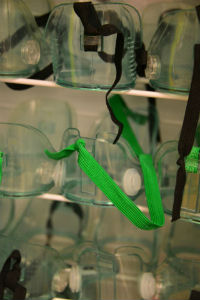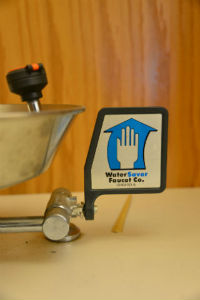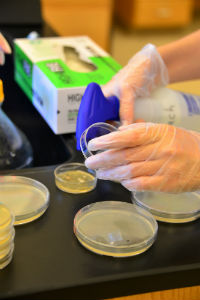Team:Montgomery Cougars NJUSA/Safety
From 2014hs.igem.org
(→1. Would any of your project ideas raise safety issues?) |
(→1. Would any of your project ideas raise safety issues?) |
||
| Line 12: | Line 12: | ||
Montgomery High School's iGEM team works out of a high school laboratory with Containment Level 1. We use non-pathogenic strains of ''E. coli'' and do not work with any hazardous chemicals. Nevertheless, we ensure that all students tie up any long hair and wear gloves, safety goggles, pants, and closed-toed shoes during lab activities. All students underwent a lab safety demonstration in early January and practiced streaking bacteria, pipetting, etc. to ensure the use of proper technique. In regard to our lab environment, the classroom we use has multiple showers, a fire extinguisher, an eye-wash station, multiple sinks, and a first aid kit. | Montgomery High School's iGEM team works out of a high school laboratory with Containment Level 1. We use non-pathogenic strains of ''E. coli'' and do not work with any hazardous chemicals. Nevertheless, we ensure that all students tie up any long hair and wear gloves, safety goggles, pants, and closed-toed shoes during lab activities. All students underwent a lab safety demonstration in early January and practiced streaking bacteria, pipetting, etc. to ensure the use of proper technique. In regard to our lab environment, the classroom we use has multiple showers, a fire extinguisher, an eye-wash station, multiple sinks, and a first aid kit. | ||
| - | Our project is contained from public use, and is unattainable for any purpose other than pure research. In an effort to better the current acne medications we only want researchers to have access to this mechanism, and therefore | + | Our project is contained from public use, and is unattainable for any purpose other than pure research. In an effort to better the current acne medications we only want researchers to have access to this mechanism, and therefore strive to keep the bacteria secure. |
===2. Do any of the new BioBrick parts (or devices) that you made this year raise safety issues?=== | ===2. Do any of the new BioBrick parts (or devices) that you made this year raise safety issues?=== | ||
Revision as of 04:49, 20 June 2014
Safety
iGEM Safety Questions
1. Would any of your project ideas raise safety issues?
Montgomery High School's iGEM team works out of a high school laboratory with Containment Level 1. We use non-pathogenic strains of E. coli and do not work with any hazardous chemicals. Nevertheless, we ensure that all students tie up any long hair and wear gloves, safety goggles, pants, and closed-toed shoes during lab activities. All students underwent a lab safety demonstration in early January and practiced streaking bacteria, pipetting, etc. to ensure the use of proper technique. In regard to our lab environment, the classroom we use has multiple showers, a fire extinguisher, an eye-wash station, multiple sinks, and a first aid kit.
Our project is contained from public use, and is unattainable for any purpose other than pure research. In an effort to better the current acne medications we only want researchers to have access to this mechanism, and therefore strive to keep the bacteria secure.
2. Do any of the new BioBrick parts (or devices) that you made this year raise safety issues?
We have not created any new BioBrick parts this year.
3. Is there a local biosafety group, committee, or review board at your institution?
There is no biosafety group at our high school. Our iGEM team is responsible for safety. As such, we have completed a mandatory lab safety quiz as well as practiced with certain equipment to ensure mastery.
We follow the World Health Organization Laboratory safety regulations: http://www.who.int/csr/resources/publications/biosafety/en/Biosafety7.pdf
4. Do you have any other ideas how to deal with safety issues that could be useful for future iGEM competitions? How could parts, devices and systems be made even safer through biosafety engineering?
In the future, we hope to have access to input from an experienced synthetic biologist or past iGEM advisor. With this aid, we can avoid experimental and lab error as well as ensure safety.
Disposal
In the photograph to the right, we are spraying the contaminated cultures with bleach to sterilize before disposal so that it does not contaminate the rest of the garbage.
 "
"


